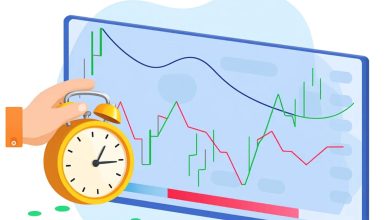Support and Resistance in Forex Trading: Your Key to Smarter Trades

What Are Support and Resistance?
Support and resistance are key price levels on a forex chart where buying or selling pressure tends to emerge, influencing price action:
-
Support: A price level where demand (buying) is strong enough to prevent further declines, acting like a “floor.” For example, if EUR/USD repeatedly bounces at 1.1000, that’s a support level.
-
Resistance: A price level where supply (selling) is strong enough to halt price increases, acting like a “ceiling.” If GBP/USD struggles to break above 1.3000, that’s a resistance level.
These levels reflect market psychology—support shows where buyers step in, while resistance indicates where sellers dominate. Understanding them is essential for timing entries and exits in forex trading.
Why Support and Resistance Matter
Support and resistance are critical for forex traders because they:
-
Highlight Key Levels: They pinpoint where price action is likely to react, simplifying trade planning.
-
Guide Risk Management: Stop-losses can be placed just beyond support or resistance to limit losses.
-
Signal Breakouts or Reversals: Prices breaking through or bouncing off these levels offer trading opportunities.
-
Apply to All Timeframes: From 5-minute charts for scalping to daily charts for swing trading, they’re versatile.
-
Reflect Market Sentiment: They show where traders are accumulating or distributing positions.
Mastering support and resistance gives you a clear edge in navigating the forex market.
How to Identify Support and Resistance
Spotting these levels requires technical analysis and practice. Here’s how to find them:
1. Historical Price Levels
Look for price points where a currency pair has repeatedly reversed or stalled:
-
Support: Areas where prices bounced upward multiple times (e.g., USD/JPY at 145.00).
-
Resistance: Zones where prices were rejected downward (e.g., EUR/USD at 1.1200).
-
Use higher timeframes (e.g., H4, D1) for stronger, more reliable levels.
2. Round Numbers
Psychological levels, like 1.2000 or 150.00, often act as support or resistance because traders place orders at these “round” figures.
3. Trendlines and Channels
Draw trendlines connecting higher lows (uptrend) or lower highs (downtrend), or use channels to mark price ranges. These dynamic levels can act as support or resistance.
4. Technical Indicators
Indicators help confirm levels:
-
Moving Averages: A 50-day MA can act as dynamic support in an uptrend.
-
Fibonacci Retracements: Levels like 38.2% or 61.8% often align with support/resistance.
-
Pivot Points: Daily or weekly pivots highlight potential reversal zones.
5. Candlestick Patterns
Patterns like pin bars, engulfing candles, or doji at a level signal strong buying/selling pressure, confirming support or resistance.
Types of Support and Resistance
Support and resistance come in different forms, each with unique implications:
1. Horizontal Levels
Static price zones where prices have historically reversed (e.g., AUD/USD support at 0.6500). These are the most common and reliable.
2. Dynamic Levels
Moving levels that adjust with price, like moving averages or trendlines. For example, a 20-day EMA may act as support in an uptrend.
3. Role Reversal
Once broken, support can become resistance, and vice versa. If EUR/GBP breaks above resistance at 0.8600, that level may later act as support.
4. Psychological Levels
Round numbers (e.g., 1.0000 on USD/CHF) attract attention, making them strong support or resistance due to order clustering.
Strategies for Trading Support and Resistance
These levels form the basis of many forex strategies. Here are three effective approaches:
1. Bounce Trading
What It Is: Buying at support or selling at resistance, expecting a price reversal.
How It Works:
-
Identify a strong support/resistance level on a 4-hour chart (e.g., USD/CAD support at 1.3500).
-
Wait for confirmation (e.g., bullish pin bar at support).
-
Enter a buy/sell trade with a stop-loss just beyond the level and a target near the next key level.
Best For: Swing traders and beginners.
2. Breakout Trading
What It Is: Entering trades when prices break through support or resistance, signaling a potential trend.
How It Works:
-
Spot a consolidation near a key level on an hourly chart (e.g., GBP/USD resistance at 1.3000).
-
Place a buy/sell order above/below the level, confirmed by high volume or a strong candle.
-
Set a stop-loss below the breakout level and target the next major level.
Best For: Day traders during volatile sessions.
3. Role Reversal Trading
What It Is: Trading when a broken support becomes resistance (or vice versa).
How It Works:
-
Monitor a breakout on a daily chart (e.g., EUR/JPY breaks resistance at 160.00).
-
Wait for a pullback to the broken level (now support).
-
Enter a buy trade with a stop-loss below the level, targeting the next resistance.
Best For: Trend-following traders.
Tips for Trading Support and Resistance
Maximize your success with these practical tips:
-
Use Multiple Timeframes: Confirm levels on higher timeframes (e.g., D1) for reliability, then use lower ones (e.g., H1) for entries.
-
Combine with Indicators: Pair levels with RSI, MACD, or Fibonacci for stronger signals.
-
Practice in a Demo Account: Test strategies risk-free to master level identification.
-
Align with News: Economic events (e.g., NFP, rate decisions) can trigger breakouts or bounces at key levels.
-
Be Patient: Wait for confirmation (e.g., candlestick patterns) to avoid false signals.
Common Mistakes to Avoid
Steer clear of these pitfalls when trading support and resistance:
-
Trading Weak Levels: Levels with only one or two touches are less reliable.
-
Ignoring Context: A level may fail during major news events; check an economic calendar.
-
Overcomplicating Charts: Focus on a few clear levels to avoid confusion.
-
Neglecting Risk Management: Always use stop-losses and risk 1-2% per trade.
-
Chasing Breakouts: Entering late without confirmation risks losses from false breaks.
Tools for Identifying Support and Resistance
Leverage these tools to enhance your analysis:
-
Trading Platforms: MetaTrader 4/5 or TradingView for charting and level marking.
-
Indicators: Moving averages, Fibonacci retracements, or pivot points for dynamic levels.
-
Candlestick Analysis: Use patterns to confirm buying/selling pressure.
-
Trading Journals: Log trades to assess level reliability and refine strategies.
Combining Support and Resistance with Other Analysis
For better results, pair support and resistance with:
-
Price Action: Candlestick patterns at levels confirm reversals or breakouts.
-
Trends: Trade bounces in the direction of the trend for higher probability.
-
Fundamentals: A support level is stronger if backed by positive news (e.g., rate hike).
-
Volatility Indicators: Bollinger Bands or ATR to gauge breakout potential.
Conclusion
Support and resistance are the backbone of forex trading, offering a clear framework for identifying high-probability trade setups. By mastering these levels, using tools like trendlines, Fibonacci, and candlestick patterns, and applying strategies like bounce or breakout trading, you can navigate the market with precision. Start with a demo account to practice spotting levels, keep your charts clean, and always use disciplined risk management. Whether you’re trading EUR/USD or GBP/JPY, support and resistance will guide you toward smarter, more profitable trades. Jump into the forex market today and start leveraging these powerful levels!




